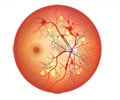- Diabetes India - (http://diabetesindia.com/)
About
Diabetes mellitus is an inheritable metabolic disease with serious implications. It can be easily managed through medications, regular exercising and proper diet.
Other Names of Type 2 Diabetes: - Non-Insulin-Dependent Diabetes Mellitus (NIDDM), Adult-Onset Diabetes
Diabetes mellitus (DM) is a metabolic disease which makes it challenging for the affected individuals to convert food to energy.
This leads to them having higher than normal levels of blood glucose with very little energy to go about their tasks.
Type 2 Diabetes Mellitus was common about couple of decades ago among the middle aged and the affluent; however with globalization and the changing lifestyles the disease is now very common in developing countries. India and China together hold the largest number of diabetics with India being known as the Diabetes Capital of the World.
6 million people in the USA have type 2 diabetes. India has a whopping 30 million and more people who are diabetics. According to a WHO estimate released in 1998, India will have the maximum number of diabetics in the world by 2025.
Normally, after a meal, the food consumed is broken down into glucose - which is a variety of carbohydrate referred popularly as ‘sugar’. Glucose is normally transported to different cells of the body to be converted into energy that is required for the cells to perform their functions. This conversion is carried out with the help of insulin, a hormone secreted by the pancreas.
Type 2 diabetes is brought about when the cells in the muscles, liver, and fat tissues fail to utilize insulin effectively. These result in a rise in the blood glucose levels with the cells remaining deprived of energy.
Increased levels of blood glucose eventually damage the nerves and blood vessels leading to severe health complications such as heart disease, stroke, kidney disease, infections in the gum, and also eye problems leading to blindness.
It is reported that nearly 8 percent of the adults in the USA have type 2 diabetes. Sadly, a good number of them are unaware of it, as they may not have any signs or symptoms.
Type 2 diabetes may occur in pregnant women and it is then called gestational diabetes mellitus (GDM). In many of them the disease may clear after delivery. However, these women with previous gestational diabetes (p GDM), are at a higher risk of developing Type 2 diabetes later on in their life so much so that GDM is considered an early stage of the disease. It is also known to be an indicator of an increased risk for cardiovascular diseases.
In these modern times it is not uncommon to find children with Type 2 DM, whereas a few years ago only type 1 diabetes occurred in children. Childhood obesity, which is quite rampant among the affluent population, causes insulin resistance which in turn leads to full blown Type 2 DM. The disease causes several complications in children including cardiovascular disease, stroke, Myocardial Infarction (MI) and even sudden death. Renal complications and neuropathy is also common.
‘Pre-diabetes’ is a condition when the blood glucose level in an individual is greater than normal but lower than the usual diabetes values. This pre diabetic state predisposes an individual to diabetes and heart diseases. So once a person has been declared ‘pre- diabetic’ it is important for him to establish a sensible lifestyle, comprising of healthy diet and moderate exercises, in order to prevent the onset of the disease.
Diabetes is not contagious but can be hereditical in families. It is a serious health condition which can be brought under control by effective management.
Causes and Risk Factors
There are so many myths regarding the causes of diabetes. One is that eating too many sweets or carbohydrate –rich food leads to diabetes. This is not true but the fact remains that both these types of food lead to obesity which is one of the main causes for diabetes.
Another myth is that stress leads to diabetes. This again is not true. But stress can affect the immune system which can trigger type 2 diabetes. Besides, stress can aggravate the existing symptoms in someone with diabetes.
Type 2 diabetes is caused when:-
- The body receptors that respond to insulin fail to do so (insulin resistance). This may send the wrong signal to the insulin-producing pancreatic cells, which produce excessive insulin
- The insulin that is produced is abnormal and is therefore substandard and non- functional
- There is not enough insulin available
Risk Factors include -
- Increasing age
- Fairly inactive lifestyle –exercise fewer than 3 times a week
- Obesity
- Gestational diabetes
- Pancreas -damaging illnesses
- First degree relative with diabetes
- Ethnicity –If you are American Indian, African American,, Asian American, Hispanic/Latino, Alaska Native or Pacific Islander.
- Blood pressure is increased to 140/90 mm Hg or above.
- Abnormal cholesterol levels –
- HDL “good” cholesterol level is below 35 mg/dL
- or triglyceride "bad cholesterol" level is above 250 mg/dL.
- History of cardiovascular disease.
- Certain medications such as -
- beta blockers,
- steroids,
- oral contraceptives,
- thiazide diuretics,
- and phenytoin sodium
- Polycystic ovary syndrome, also called PCOS in women.
- Tuberculosis in adults.
- Impaired glucose tolerance (IGT) detected during previous testing
- Insulin resistance associated illnesses such as acanthosis nigricans, which is characterized by dark, velvety rash around the neck or armpits.

























